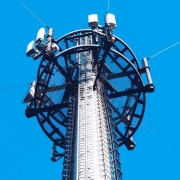What is 5G?
5G is a wireless technology. Once it is fully deployed, no wire or cable will be required to deliver services or communications to devices such as a mobile, fixed devices like security systems or a car.
It is the next ‘generation’ of internet connection. One of the key benefits is the faster download and upload speeds. We are consuming more and more data. From social media to streaming services, there will be breakdowns in service when lots of people in one area access services simultaneously.
The radio system uses the same airwaves as 4G but with faster speeds. “5G speeds are directly related to how wide the available channels are”. There are three forms of 5G: low band, mid band and high band.
Why would businesses adopt it?
ZD Net found use cases include driverless automobiles, virtual reality and augmented reality, cloud computing, Internet of Things and healthcare.
A private network could connect devices faster and more securely. Since the move of many employees to remote working, connectivity and collaboration have been key. With 5G, tasks which can be completed over a network, such as file sharing or customer service will be faster. Therefore, the team could feel more productive and connected.
The Internet of Things also requires high connectivity. With 5G, communication between devices would be quicker and more efficient. Therefore, autonomous vehicles and robotics for example would be more accessible for businesses.
Who is interested in it?
According to a further ZD Net article, the five industries that will be most affected by 5G when the rollout is complete are
- transportation
- manufacturing
- healthcare
- energy and
- smart cities.
Should you consider it?
The lack of connectivity and internet speed is a problem across many countries, including the UK. Initially, 5G would be the high bandwidth which only covers a short distance although it has a greater capacity. Lower frequency bands are more effective for longer distances.
Could 5G solve the rural connectivity gap?
However, there may be additional cybersecurity risks when implementing this technology. If more devices are connected and interconnected via the network, this could increase the vulnerability of an attack.
There is also evidence that it could be harmful to ecosystems. This could affect a company’s CSR or sustainability initiatives.
A lot of the potential success of 5G is also dependent on a new class of data centres.
5G Businesses
Organisations who are providing 5G services or will plan to provide a 5G update include Verizon, AT&T, T-Mobile and Sprint.
Figures for 5G this year
In 2020, of the respondents who mentioned that they were going to deploy emerging technologies in the future, 10% of respondents reported that their organisation was planning to adopt 5G.
5G Glossary
5G = a wireless technology. Once it is fully deployed, no wire or cable will be required to deliver services or communications to devices such as a mobile, fixed devices like security systems or a car.
Cloud computing = “cloud computing is the delivery of computing services – servers, storage, databases, networking, software, analytics and more – over the Internet. Everyone type of organisation – from tiny start-ups to global corporations, from government agencies to non-profits – are embracing the technology.”
Data centre = “a large group of networked computer servers typically used by organisations for the remote storage, processing, or distribution of large amounts of data.”
Edge computing = “Edge computing is computing that’s done at or near the source of the data, instead of relying on the cloud at one of a dozen data centers to do all the work. It doesn’t mean the cloud will disappear. It means the cloud is coming to you.”
Smart City = “a Smart City is one in which sensor-driven data collection and powerful analytics are used to automate and orchestrate a wide range of services in the interests of better performance, lower costs and lessened environmental impact”. This could include, as examples, traffic management, healthcare services, water services, and power services.
Wireless = “broadcasting, computer networking, or other communication using radio signals, microwaves etc”. For computers this could either be through Wi-Fi or Bluetooth










Leave a Reply
Want to join the discussion?Feel free to contribute!